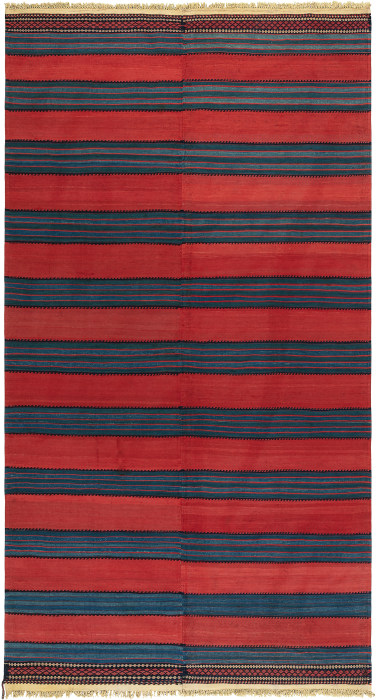
Distinct from the perhaps more familiar pile carpet, flatweaves are in essence heavyweight fabrics whose pioneering structure speaks to the earliest forms of weaving. This naiveté of form prescribes a design language which encourages figurative and bold elements, deft use of materials, and an embrace of color and contrast in every Warp & Weft Flatweave.
Traditional carpets are available fully bespoke to the exact standards for which Warp & Weft is renowned. Whether in shape, color, size, or material, each bespoke carpet is crafted using time-honored traditional techniques well suited to your specifications.
Kircil flatweaves combine the three staple fibers used for weaving by nomads and villagers in Anatolia for many generations. While wool, goat hair and cotton were used in numerous different combinations to make fabrics for specific uses, Kircil are the only known weaving type in which all three were used in equal measure. Goat hair was used to weave tents as it is strong, highly water resistant and fire retardant, and in kircils its rougher surface is well tempered in combination with wool and cotton.
With sparing use of dyed wool used, Kircil flatweaves celebrate the natural colors and tactility of materials and convey a depth of texture and tone that appeal to the contemporary eye. Woven in strips and then joined together, these flatweaves would primarily be used for the floor, where their robust structure, material resilience and soft texture is highly desirable. The fabric was so useful and important that it would be recycled and then used to make saddle and storage bags, used a cloth for drying grain, and converted into covers for all purposes. The ubiquity and great utility of the material meant that many examples did not survive life on the Anatolian plains but these examples again find new uses in today’s homes. The subtle variety of color and texture is dependent on the choice and balance of the materials used, how they are combined together artistically, meaning that there are never two that are alike. The uniqueness of each piece reflects their depth in color and handwoven nature.